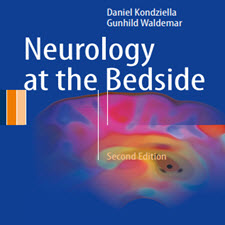بایگانی برچسب برای: Muscle
![Muscle.and.Tendon.Injuries.Evaluation.[taliem.ir]](https://taliem.ir/wp-content/uploads/Muscle.and_.Tendon.Injuries.Evaluation.taliem.ir_.jpg)
Muscle and Tendon Injuries
اطلاع رسانیMuscle is one of the four principal tissue types; it produces movement by pulling on the dense connective tissue which forms the tendons and periosteum. In the human body there are four different types of muscle:
1. Smooth muscle, also known as involuntary, or nonstriated muscle, is responsible for the generation of the tunica muscularis, or muscle coat, of the internal organs and blood vessels and makes up the stroma of several visceral organs. The contraction of smooth muscle cells is involuntary, as opposed to the contraction of striated muscle; it is slower and requires less energy but can be maintained for longer periods of time. The sarcoplasm (cytoplasm of muscle cells) of smooth muscle cells is rich in myofbrils, which are not arranged in sarcomeres as in striated muscle types. 2. Cardiac muscle, also called myocardium, makes up the walls of the heart and is responsible for the pumping of blood. Cardiac muscle contraction is involuntary, unlike skeletal muscle, although it is characterised by striations similar to those in skeletal muscle which are due to the organised distribution of myofbrils within the cell sarcomere. 3. Skeletal muscle, also known as striated or voluntary muscle, is connected to the skeleton and is responsible for generating movement. Contraction is under voluntary control, and as a result the skeletal muscle is highly innervated by motoneurons: every muscle fbre is contacted by a motoneuron at the neuromuscular junction, which transmits the signal to contract.

Neurology at the Bedside
اطلاع رسانیNeurologists take pride in their clinical bedside skills, perhaps even more so than other physicians. Good clinical mentorship is mandatory in order to develop such skills; however, due to an ever-increasing need for more effcient working structures, the time and dedication that mentorship requires may not always be available. The authors have therefore written this book for neurology residents who are looking for a personal clinical mentor, guiding them through the entire patient encounter: from a comprehensive history and an effcient clinical examination to a thorough differential diagnosis, ancillary investigations, and fnally treatment options.
![Plasticity.of.Skeletal.Muscle_.From.Molecular.[taliem.ir]](https://taliem.ir/wp-content/uploads/Plasticity.of_.Skeletal.Muscle_.From_.Molecular.taliem.ir_.jpg)
The Plasticity of Skeletal Muscle
اطلاع رسانیRecent advances in the generation of skeletal muscle derivatives from pluripotent stem cells (PSCs) provide innovative tools for muscle development, disease modeling, and cell replacement therapies. Here, we revise major relevant findings that have contributed to these advances in the field, by the revision of how early findings using mouse embryonic stem cells (ESCs) set the bases for the derivation of skeletal muscle cells from human pluripotent stem cells (hPSCs) and patient-derived human-induced pluripotent stem cells (hiPSCs) to the use of genome editing platforms allowing for disease modeling in the petri dish.

